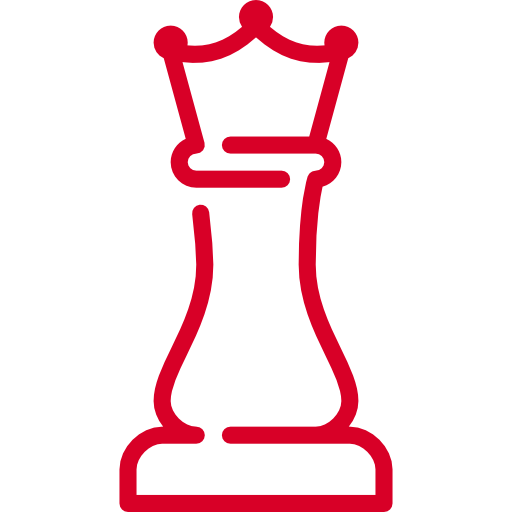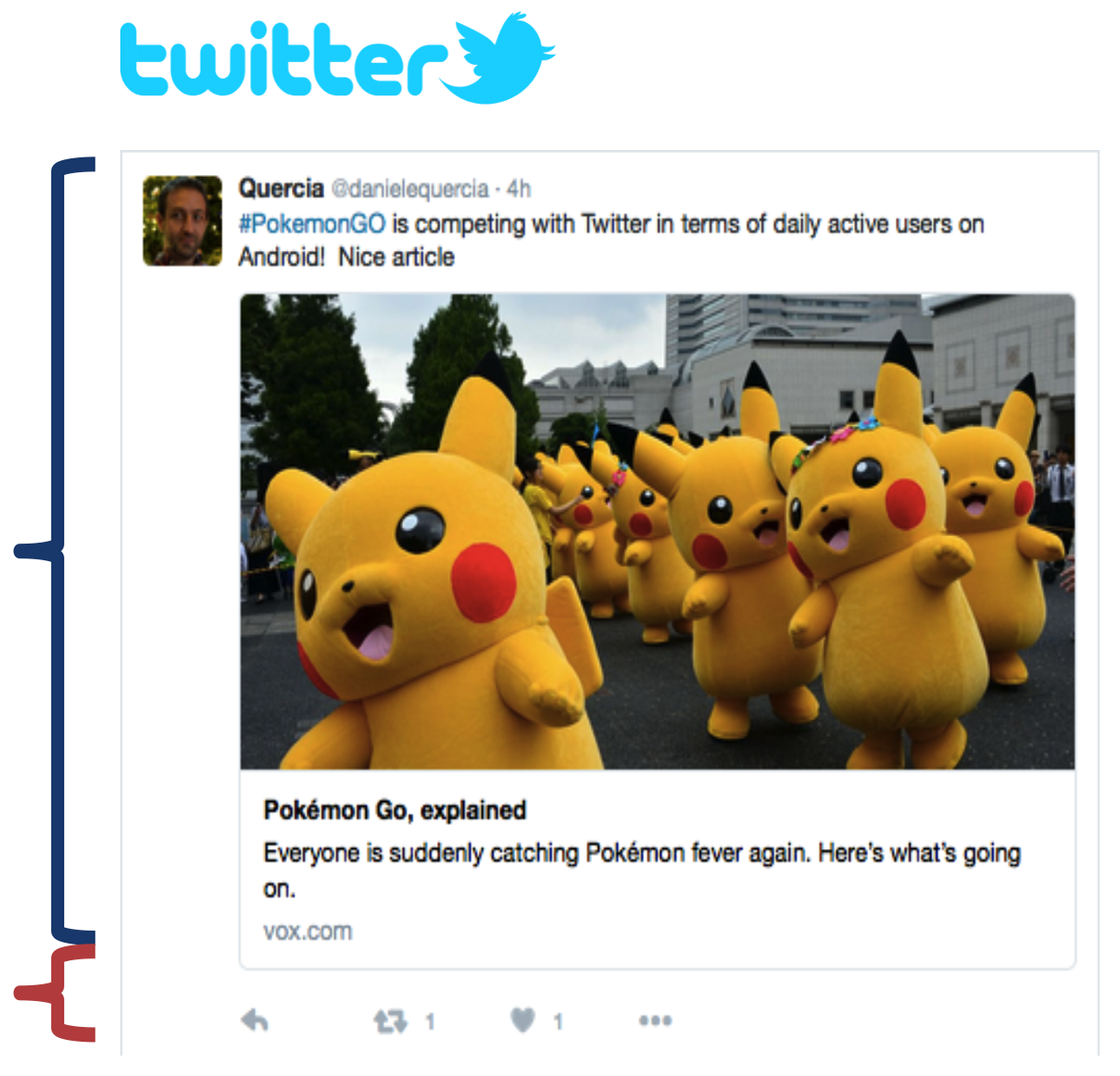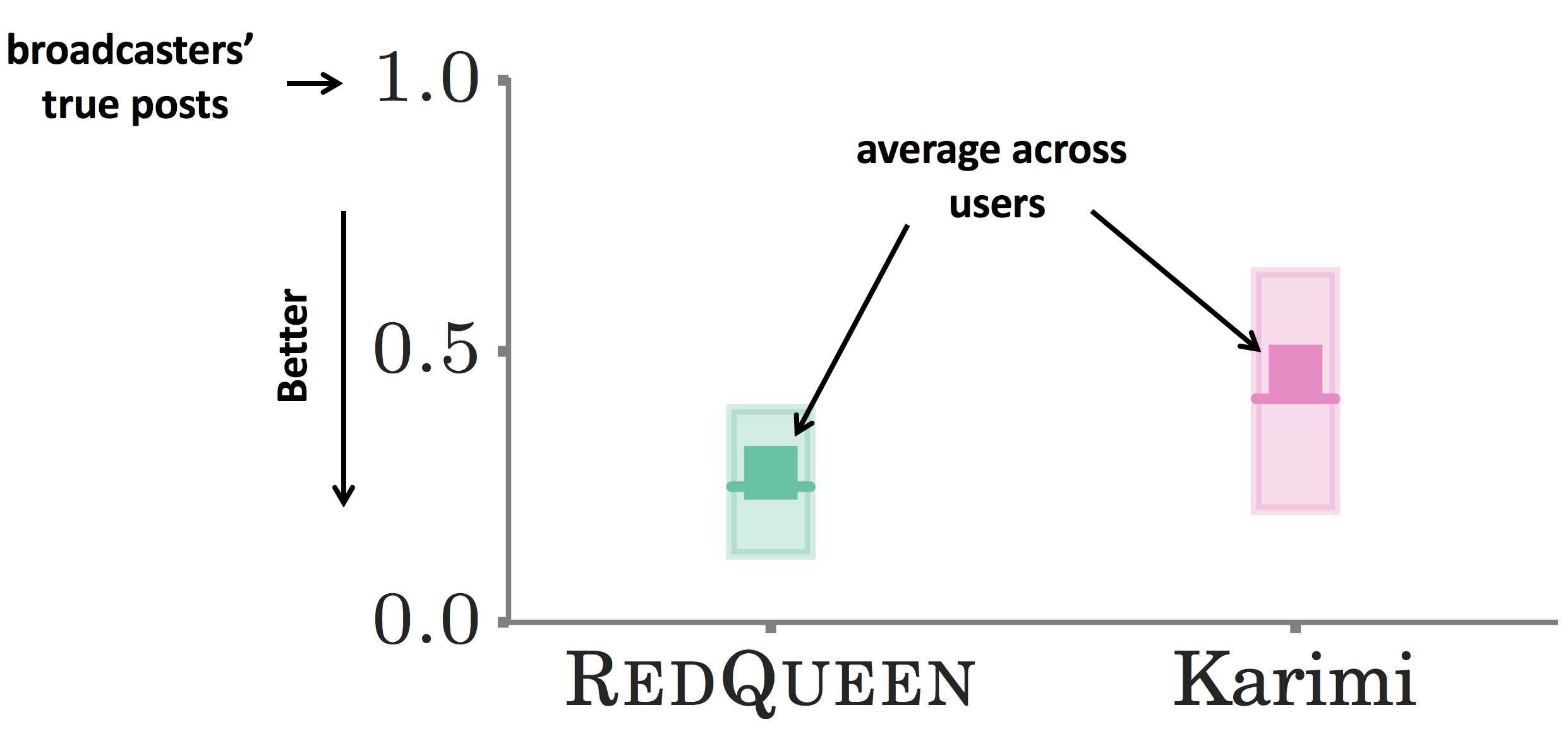


RedQueen
An Online Algorithm for Smart Broadcasting in Social Networks
Ali Zarezade, Utkarsh Upadhyay, Hamid R. Rabiee, Manuel Gomez-Rodriguez
Social media is a broadcasting platform
Everybody is a broadcaster



User attention is scarce

Not all posting times are the same.
When-to-post

Problem setup

\( r(t) \): position of the highest ranked post by our broadcaster on the follower's feed.
Dynamics of inverse-chronological rank
 $$
r(t+dt) = \left\{
\begin{array}{cl}
& r(t)+1 & {\color{other} \text{Others post}}\\
& 0 & {\color{us} \text{Our broadcaster posts}}\\
& r(t) & \text{No-one posts}
\end{array}
\right.
$$
$$
r(t+dt) = \left\{
\begin{array}{cl}
& r(t)+1 & {\color{other} \text{Others post}}\\
& 0 & {\color{us} \text{Our broadcaster posts}}\\
& r(t) & \text{No-one posts}
\end{array}
\right.
$$
Posting dynamics using temporal point processes

Other broadcasters can be bursty with time varying rates, which we cannot control.
Posting dynamics using temporal point processes

We would like to control our rate of posting \( u(t) \) to minimize \( r(t) \).
Optimal rate of posting

For a very general class of behavior of other broadcasters, the optimal rate of posting is \( u^{*}(t) = c \times r(t) \).
\( u^{*}(t) \) to when-to-post

Since \( u(t) = 0 \), so we do not need to post at all.
\( u^{*}(t) \) to when-to-post

We take one sample from \( exp(c) \) to determine our next post's time.
\( u^{*}(t) \) to when-to-post

If other broadcasters post in the meanwhile, we may revise our planned posting time.
\( u^{*}(t) \) to when-to-post

However, we may not update our time if we planned to post was earlier than the new sampled time.
\( u^{*}(t) \) to when-to-post

After we post, we start this process all over again.
Results
Average rank

\( 72\% \) average drop in rank, lowered for all users
Demo
Time at top \( \int_{0}^{t} \mathbb{I}(r(\tau) \lt 1)\, d\tau \)
Questions?